Electric cars are the future. As a petrolhead this makes me sad, I love the sound of a sporty petrol car, or the way a turbocharged engine can push me down the road. But electric power has its own benefits. Instant torque from rest, maximum torque at all times, the ability to “refill the fuel” just by slowing down or going down a hill. And we need to embrace the future, not wallow in the past. With this in mind I was really looking forward to driving the Ioniq EV. It’s currently the most affordable, practical electric cars in the New Zealand Market. I drove the hybrid Ioniq a few months ago and I really liked it. So what’s the EV like to live with for a week?
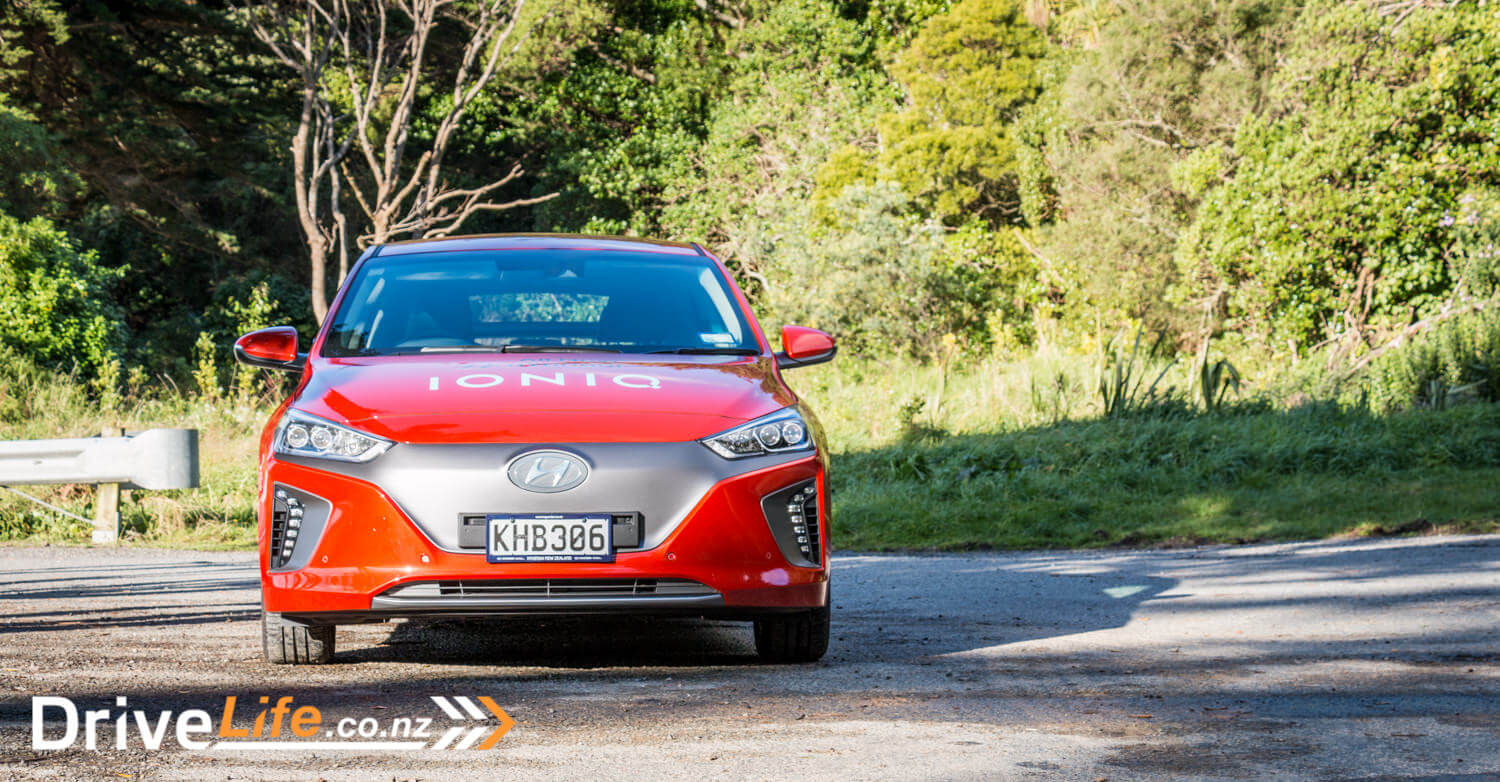
The Range
There are two versions of the Ioniq currently available in New Zealand: the hybrid, and the full EV tested here. There will be a plug-in hybrid (PHEV) available in future.
The Entry spec EV starts at $59,900, and for that you get 16” alloys, ABS, EBD, AEB, stability control, ESC, traction control, 7 airbags, radar cruise, tyre pressure monitoring, auto lights and wipers, reversing camera, rear parking sensors, wireless phone charger, Infinity sound system with subwoofer, and climate control.
The Elite spec adds blind spot detection, rear cross traffic alert, front and rear parking sensors, LED headlights, smart welcome system, heated wing mirrors, leather seats, 10-way electrically adjustable driver’s seat, front and rear heated seats, and a heated steering wheel,
Both have the same powertrain with a 28kWh battery powering an 88kW/295Nm direct drive electric motor. Hyundai don’t list a range in their brochure dividing the quoted 11.5kWh/100km into 28kWh gives 243km.
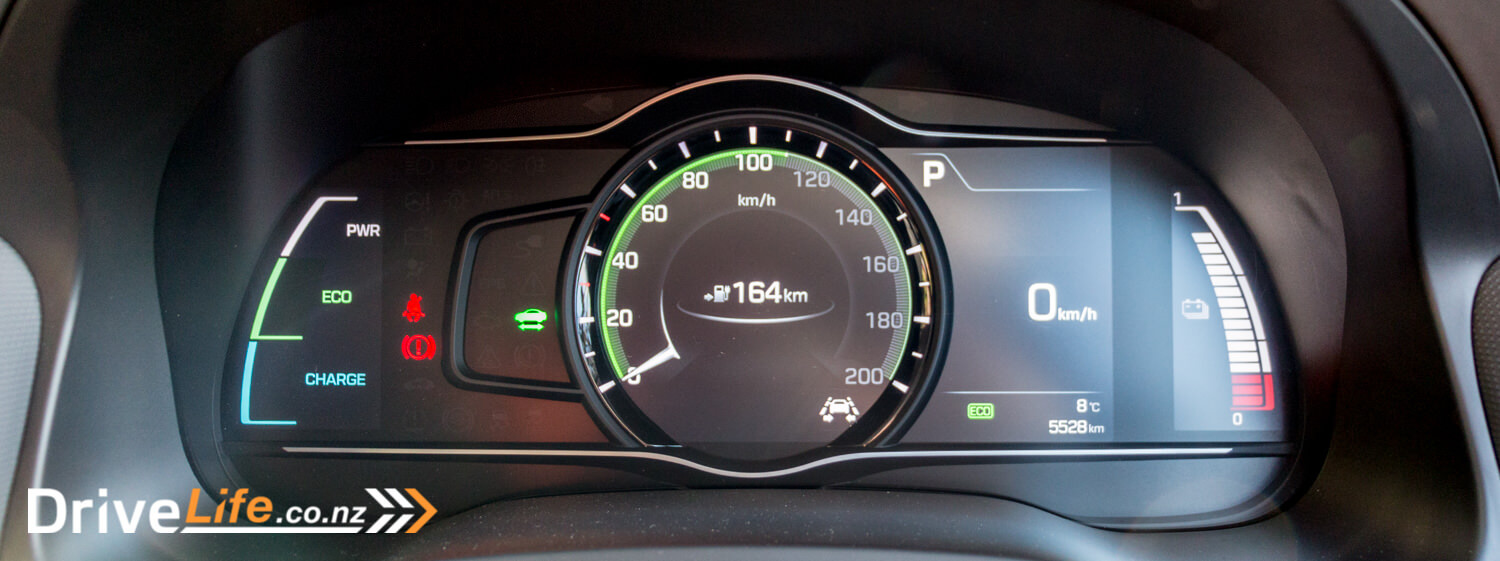
First Impressions
When I went to pick up the Ioniq I was expecting to get another white or silver car, so the bright Phoenix Orange was a welcome sight – I like a bit of colour on a car. There has been a trend with the first generation of mainstream electric cars to try to create a different look, but Hyundai haven’t gone too quirky on the design with this one.
And that’s a good thing in my opinion, it’s not really necessary to be shouting about your car’s electricness. There is a big curved panel on the front where the grille would be but that’s really the only unusual feature.
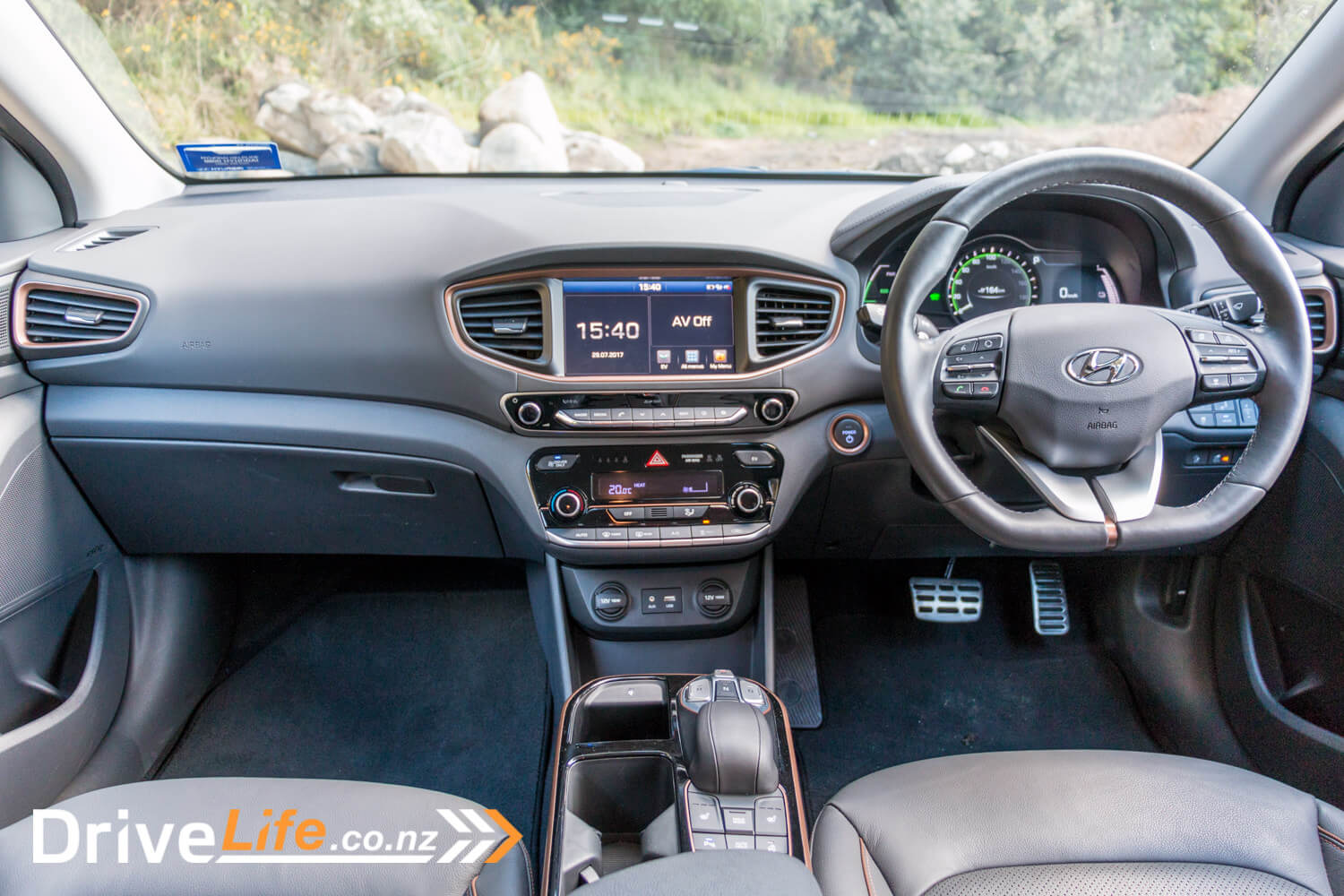
The Inside
The seats in the Ioniq Elite are leather, and as well as looking great they’re nice and comfortable. They have copper-coloured stitching which matches the copper-coloured inserts in the dash and centre console. The driver’s seat is 10-way electrically adjustable including lumbar adjustment, passenger side is manually adjusted. Both are heated, as is the rear seat, and the steering wheel. The wheel is leather clad and has a flat bottom, which I like, and buttons to control the cruise, stereo and phone.
The instrument cluster is a clever combination of digital screen and LCD displays, with a large central speedo, which converts to a power percentage display in Sport mode. There’s a battery charge gauge, and a charge/eco/power gauge to tell you how efficient your driving is. Then there is a large information display which can show digital speedo, trip computer etc.
One detail about the interior that amused me is that the button to open the charger port cover is still the standard picture of a fuel pump. I guess it still makes sense but seems a bit incongruous in a full EV.
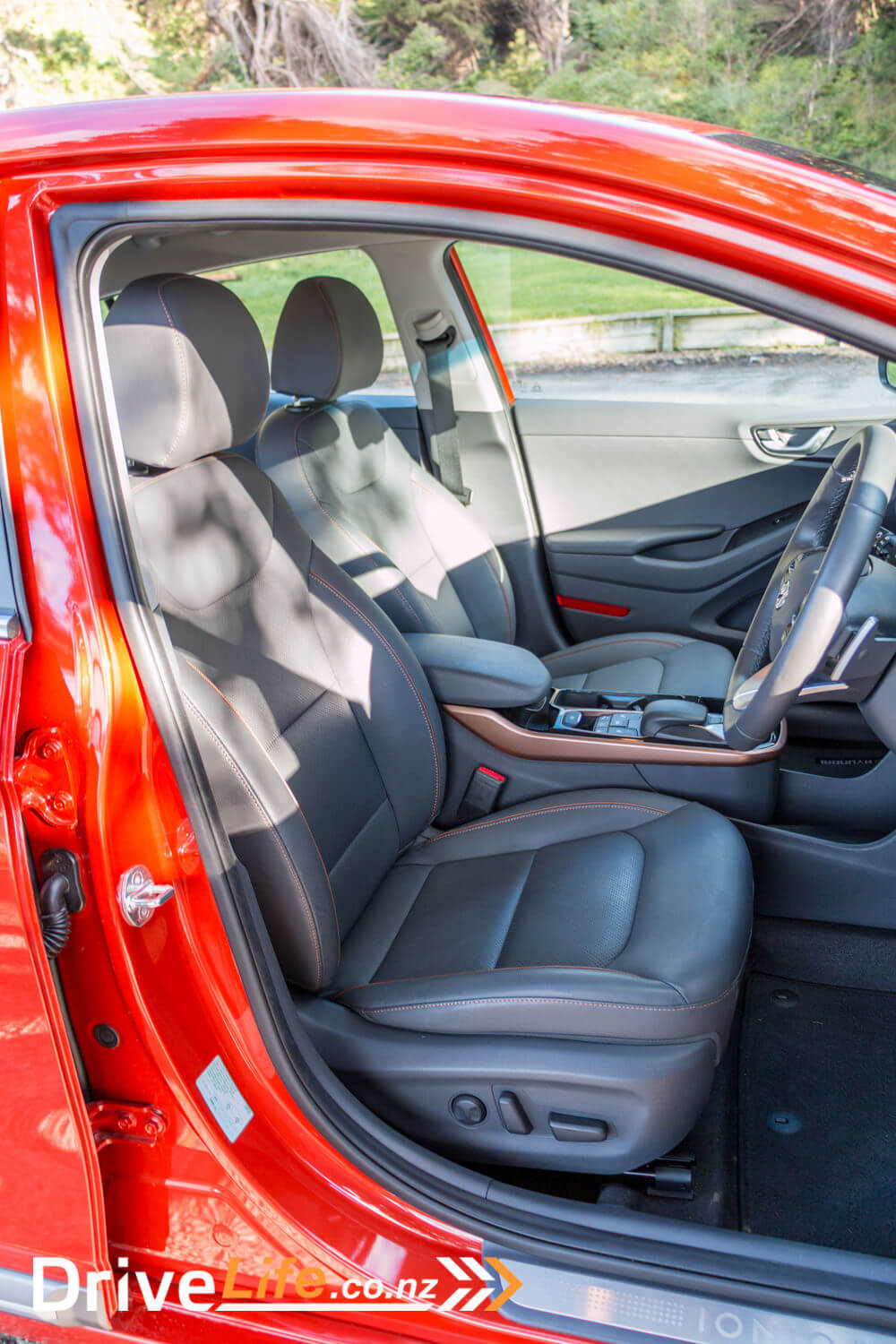
The 8” touch screen in the centre console is used for the stereo and reversing camera displays as well as various apps, such as Android Auto, Apple Carplay, an eco/range app and satnav. Unfortunately our test car was missing the SD card for the nav system so we couldn’t test it, but in other countries it will intelligently guide you to charging stations when needed. Hopefully this function will come to New Zealand as well.
Below the screen are physical buttons and knobs for the stereo and mode settings, which I approve of. And there’s a separate display for the dual-zone aircon. I like the option to have driver-only aircon to save power when you’re the only one in the car. The lights, heated seats and wheel are driven from a separate battery to the ones that provide the main power, but the aircon is the biggest power drain and does affect range when used.
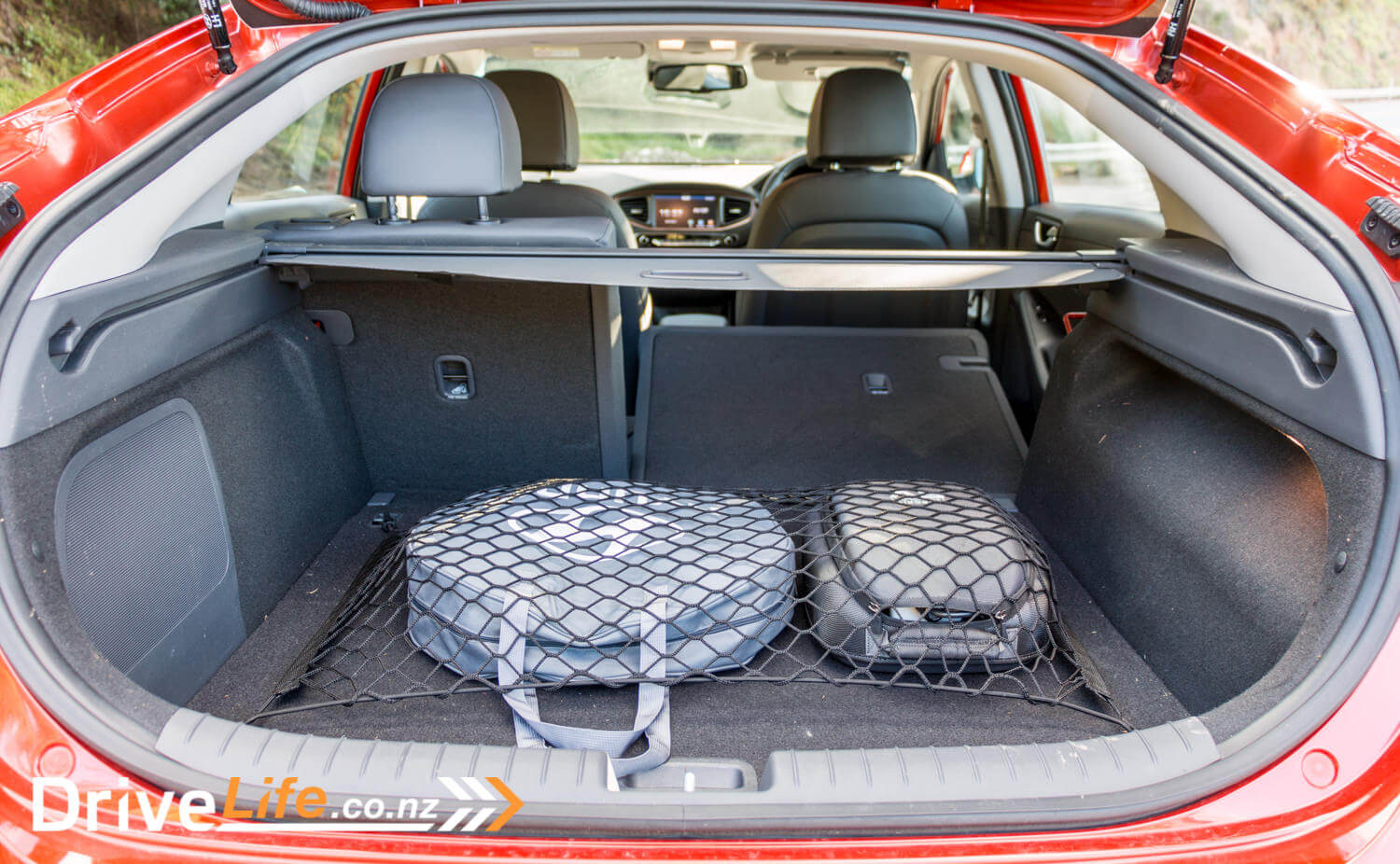
The 60/40 split rear seats are as comfortable as the fronts, and there’s excellent legroom. Boot space is generous too at 350 litres, but you do lose some of that to the bags which hold your various charger cables. The battery packs are under the boot floor where the spare wheel would be, but there’s still an extra cubby there containing a fire extinguisher and first aid kit.
Pop the bonnet and there’s what looks like an engine cover, with a large 12v battery to one side. Look around a bit more though and you realise there’s a lot of space in there with not much at all under the cover.
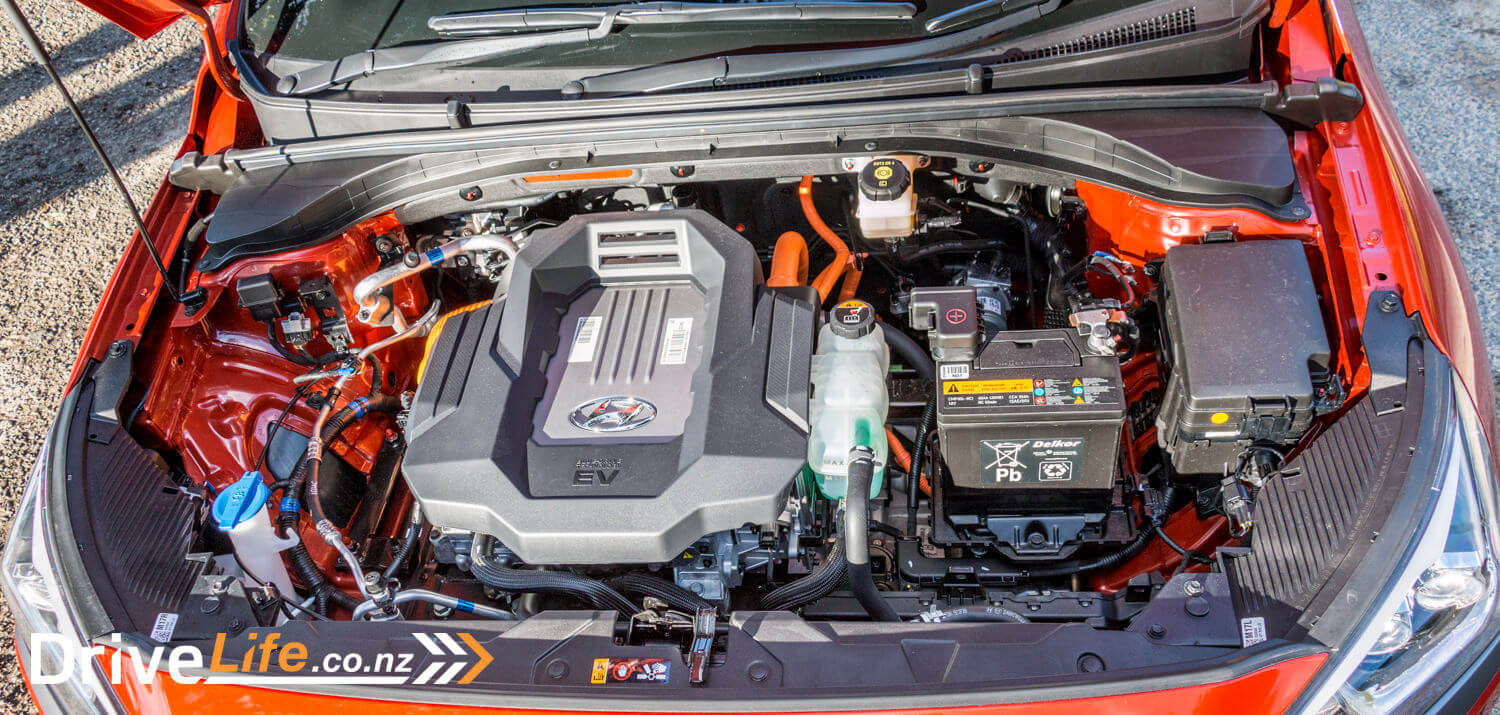
The Drive
The Ioniq has keyless entry and start, and I like Hyundai’s welcome function that detects when the key is close to the car, unfolds the mirrors, and turns on puddle and door handle lights.
Sit in the car, foot on the brake pedal and press the Power button and the dash lights up, but the car is silent otherwise. This is something that hybrid drivers will be used to but it’s unusual when coming from a combustion engined car. “Gears” are selected with a series of push buttons on the front of the centre console. Push D or R and the electronic parking brake disengages automatically.
Pulling into traffic that first time was a bit weird. Externally the Ioniq generates a whirring noise below 50kph to alert pedestrians of it presence. There’s a reversing beep as well to do the same job. But internally there’s barely any sound. It just goes – and it goes pretty well. Even more so if you put it into Sport mode, which makes it noticeably quicker and more responsive.
The almost silent running means it’s easy to creep over the speed limit. 60kph feels pretty much like 50kph in the Ioniq, so the standard radar cruise control is a welcome addition. I used it a lot, it’s easy to set, with the set speed showing on the display, and it works really well. It will come to a complete standstill in traffic and wait for a tap of the pedal or button to set off again.
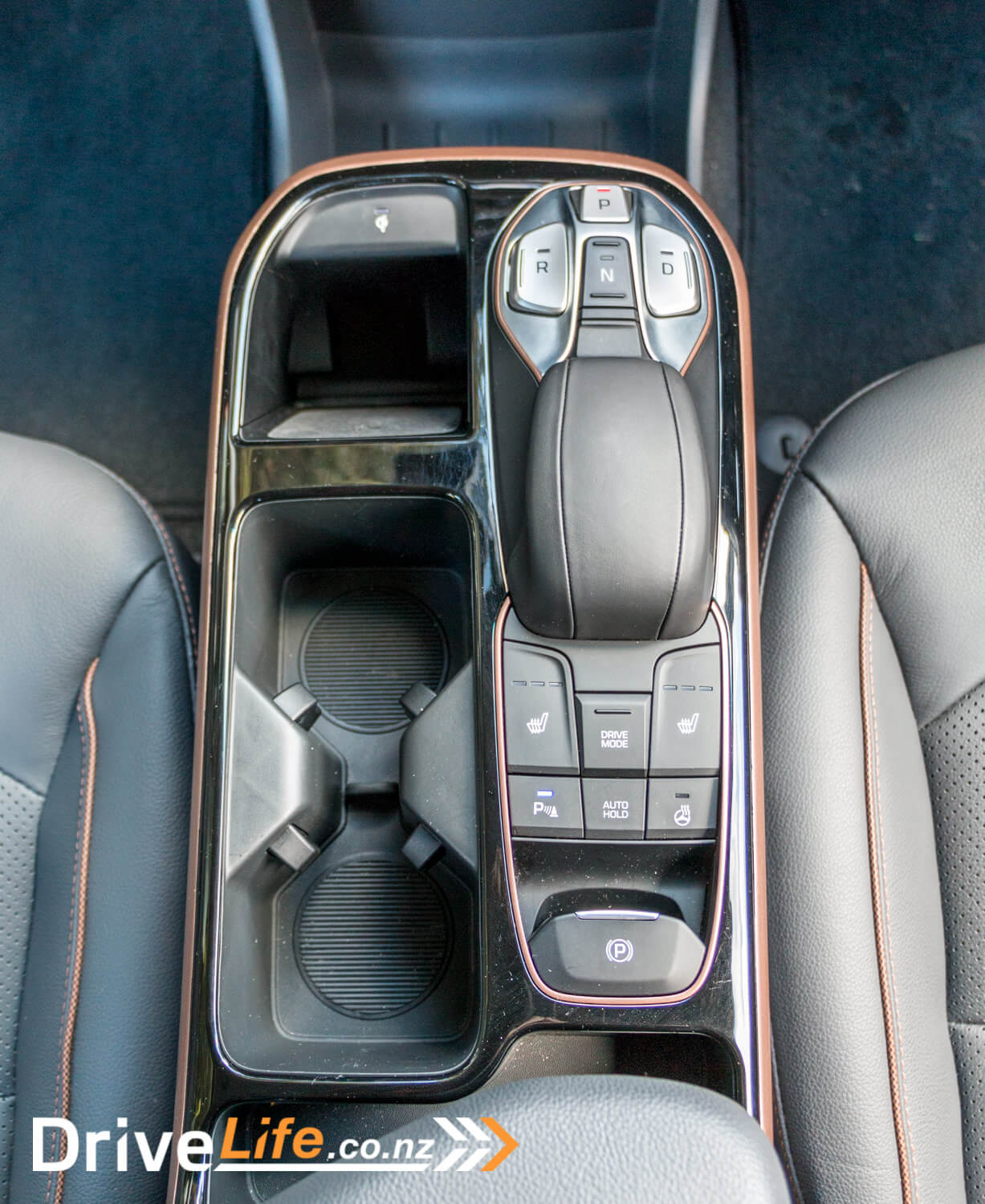
My first drive home in the Ioniq was an interesting and different experience. The only noise inside is some tyre noise from the road, the aircon fans, and of course the stereo. The stereo needs to be good if it’s the only noise in the car – and the 8 speaker Infinity system, with subwoofer, is very good indeed. Bluetooth pairing went without a hitch, and it always switched back to playing from my phone when I got back into the car.
The Ioniq had been plugged into the trickle charger overnight and when I collected it the range showed 196km. After the 16km trip home it read 194km. Not bad! This was quite unusual though. Over the week I had it I found the range meter to be very accurate, always within a couple of km of the actual distance travelled. This is reassuring and helps reduce the dreaded range anxiety.
The charging time depends on the type of charger the car is plugged into. To charge from a standard 10-amp house socket you use the trickle charger, which takes about 15.5 hours from empty to full. If you’re connected to a dedicated EV charger, charge times are much less.
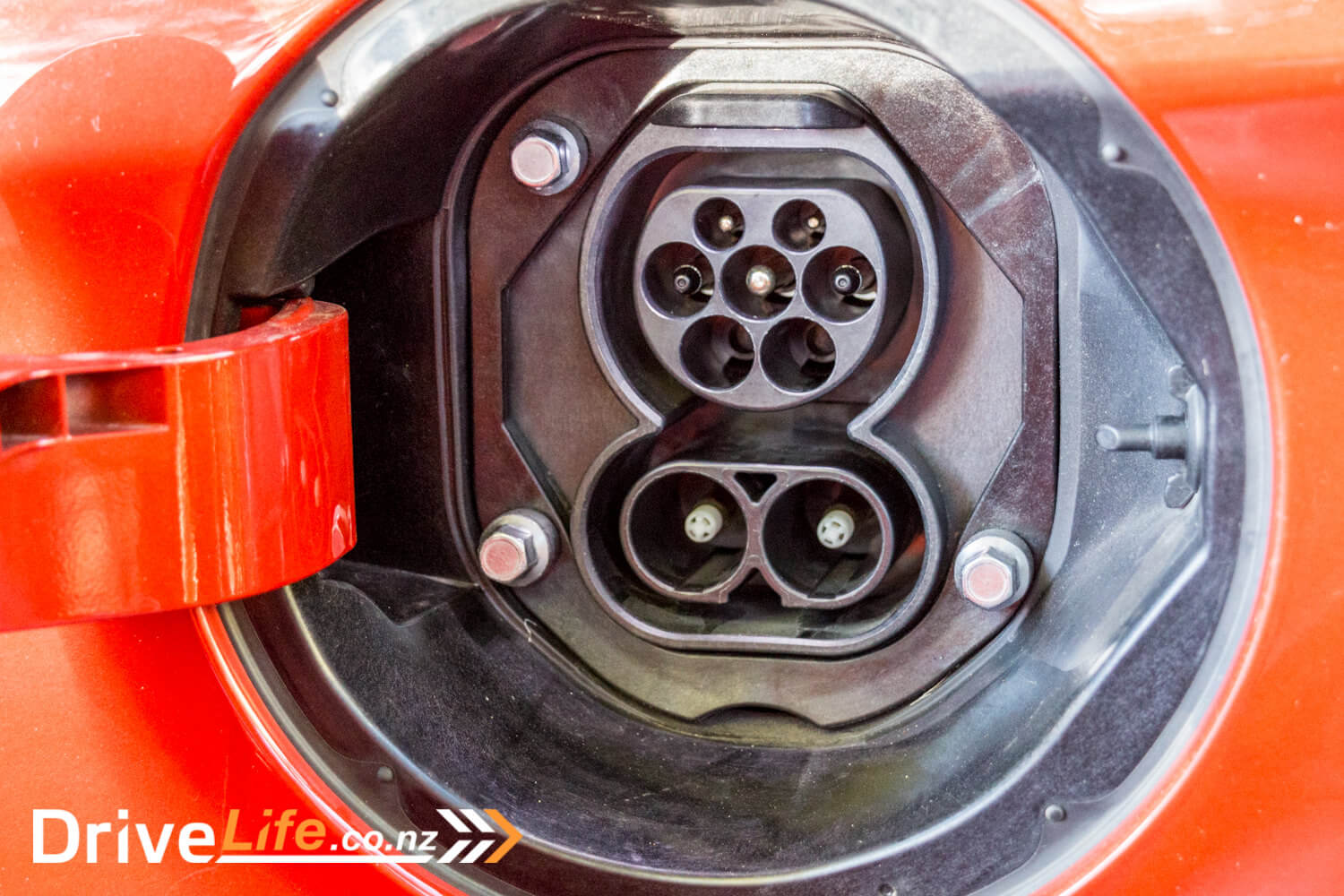
I had promised my daughter that if we got an electric car we’d take it to Staglands, who have one of the few faster chargers currently in the Wellington area. So with about 120km of range showing, we set off on the 55km journey from our house, counting on the charge once we got there to be able to get back comfortably. We had been mostly using the Ioniq for short journeys throughout the week and averaging about 13-15kW per 100km, not far off the 11.5 quoted figure.
Even after a few days of getting used to it, the journey on the motorway seemed eerily quiet. We tried a 0-100 launch from some traffic lights and again it was a strange experience – no drama and almost no sound, just quick, efficient acceleration. Hyundai’s quoted 0-100 time is 8.1 seconds, so it’s brisk but not fast. But this isn’t a Tesla, showing off with ludicrous acceleration, it’s a normal family hatchback, and is fast enough for normal driving.
There are flappy paddles behind the steering wheel, not for gear shifting because there’s only one gear. They control the three levels of regeneration you get when lifting off the throttle – or the amount of engine braking in traditional terms. Level one is slight resistance, two is similar to a engine braking on a manual petrol car, three is like you’re gently pressing the brake. The Hyundai dealer recommended using one or two in normal driving.
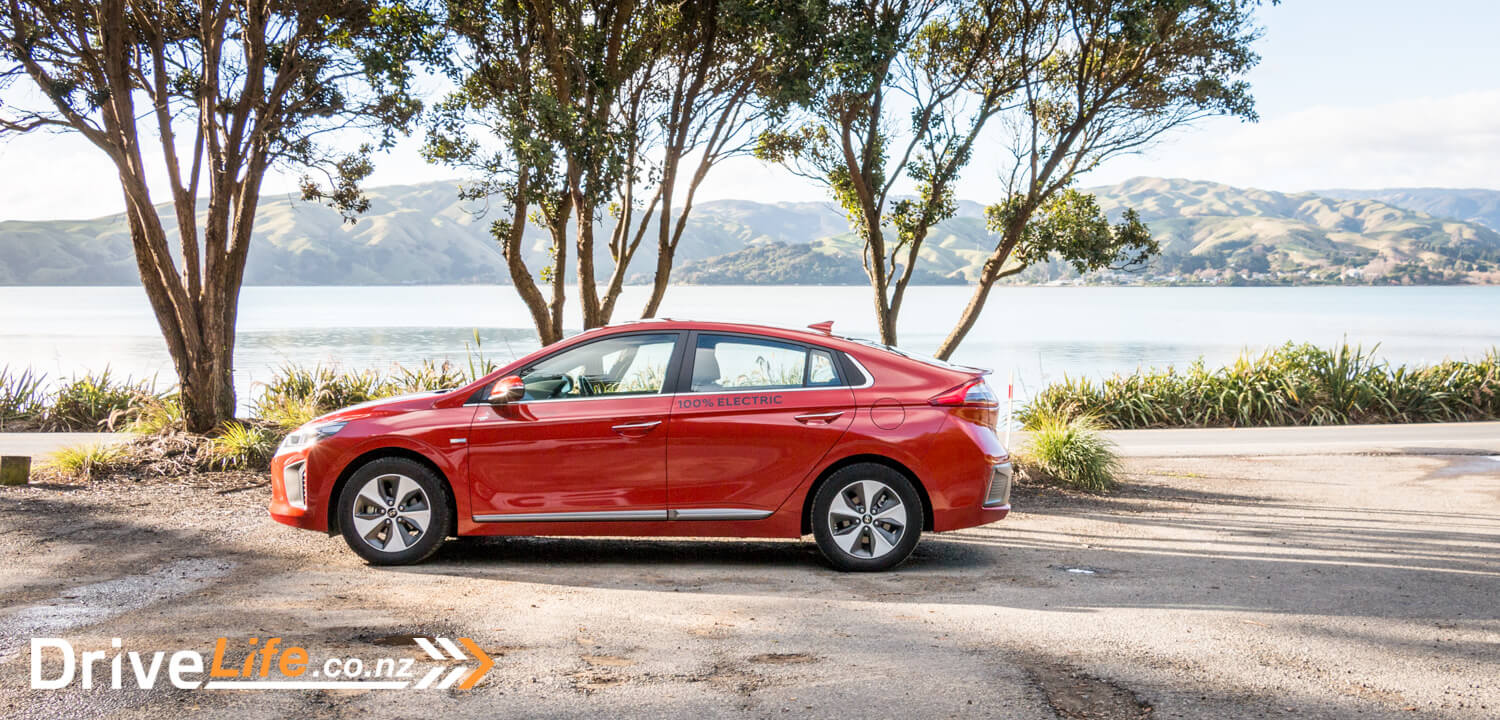
Off the motorway and onto the twisting, narrow road and it was time to find out if you can have some fun in this eco-car. And the answer is yes, you can! The suspension is firm, but pliant with minimal body roll, and it still absorbs the bumps nicely. The batteries add weight but they’re quite low down, helping the car’s centre of gravity. And that instant torque means there’s no power lag coming out of corners. This car handles way better than you’d expect.
Put it into Sport mode and it feels as though the throttle loosens up, like there was a resistance that has been removed. The main speedo changes to a red 0-100% power meter, and acceleration is noticeably sharper. After a minute or two of more aggressive driving I had a grin on my face, but my daughter was starting to get car sick, so we went back to Eco mode and silently cruised the rest of the way. Even in Eco mode, not pushing it at all, I found I kept catching up with other cars on the winding road. I even overtook one on one of the straight bits, pushing the throttle a bit hard at 60kph and getting a little wheelspin before the traction control sorted it out.
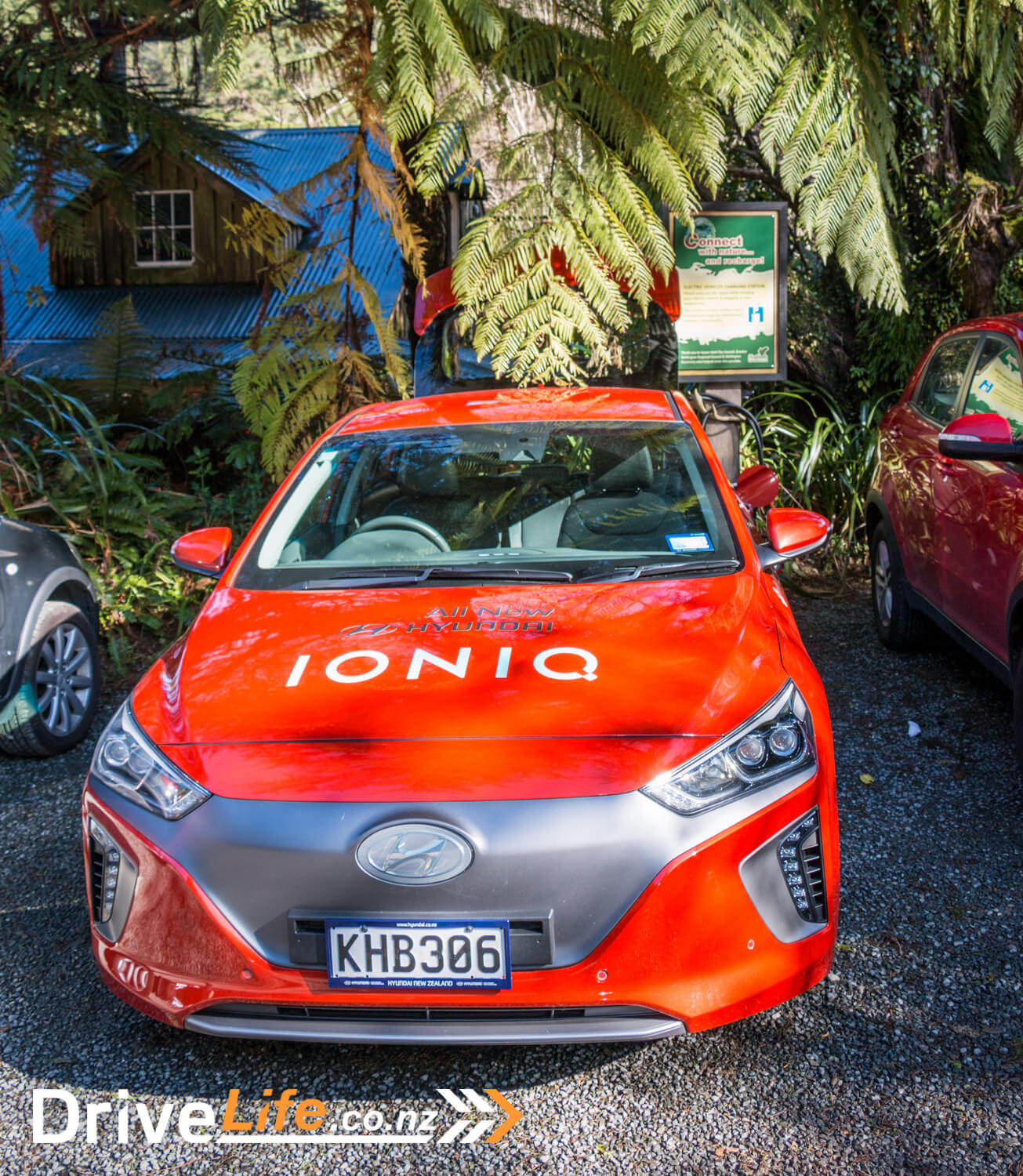
When we arrived there were cars parked blocking the charger. I’d noticed this on previous visits and asked a staff member about it, and they deliberately park staff vehicles there and move them on request. We asked for a car to be moved so we could park there. This is a possible problem with special EV parking spaces – that other drivers won’t respect the parking rules, making it harder to charge. Once there we parked by the charger and got the right cable from the pouch in the boot – there are a couple of options depending on type of charger. The range was reading 68km, and plugging in gave a time to full of 3 hours 15 minutes. There are three lights on the dash which show the car is charging and how full it is, presumably so other charger users can see when yours is full and swap the cable to theirs. Once these cars get more popular we’ll need to develop a charging etiquette.
We returned to the car after 2.5 hours to find it at 196km of range. Plenty for the drive home and the next couple of days of use.
Thanks to Staglands for the free charge. Their charger is currently free for anyone to use.
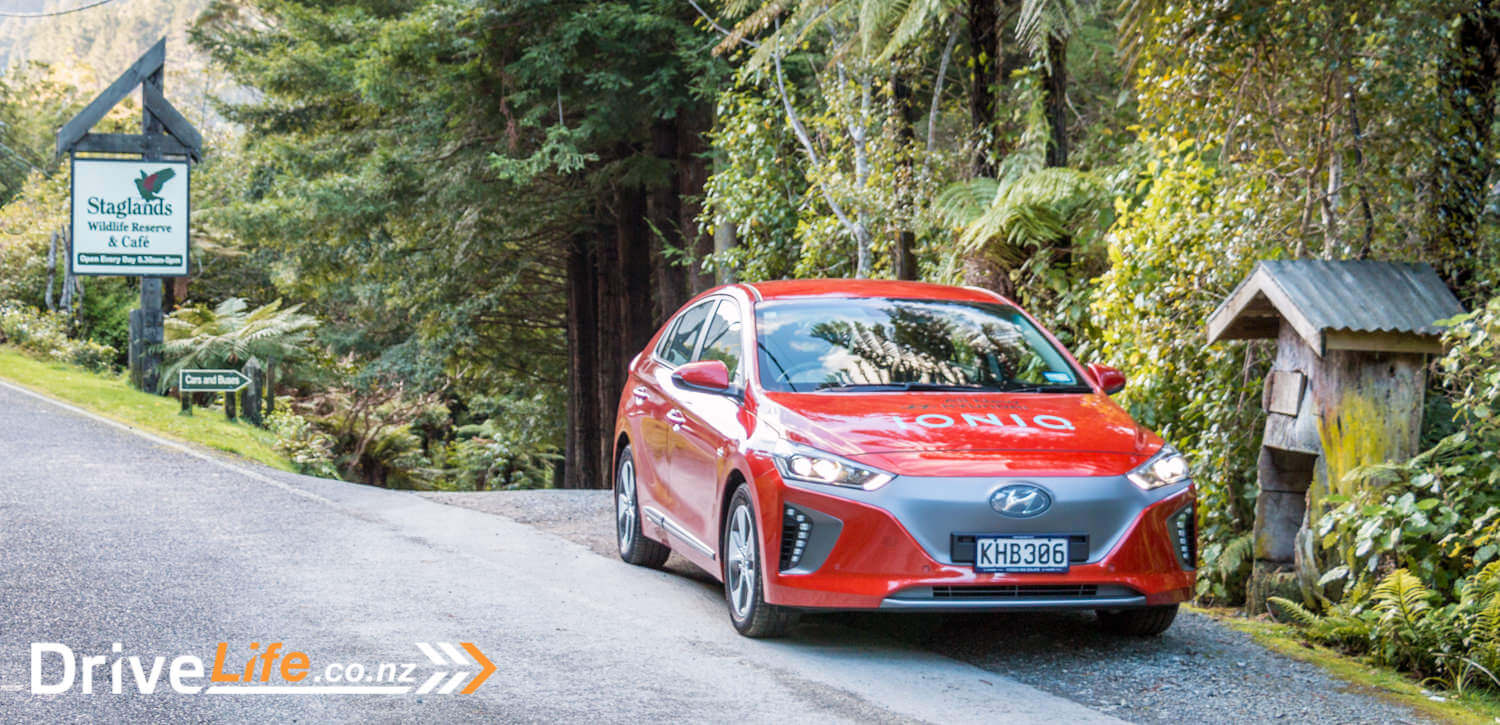
The Competition
There are lots of EVs coming soon, such as the VW E-Golf and Tesla Model 3 but there aren’t many you can buy right now in New Zealand
| Brand / Model | Engine | Power | Consumption | Range (approx) | Price Highest to Lowest |
| Tesla Model S 75 Sportback | Electric motor | 285kW | Approx 21kWh/100km | 400km | $121,395 |
| BMW i3 E | Electric Motor | 125kW | Approx 16.8kWh/100km | 130km | $75,700 |
| Renault Zoe Zen | Electric Motor | 66kW | Approx 10.5kWh/100km | 210km | $74,990 |
| Hyundai Ioniq EV Elite | PMSM Electric Motor | 88kW/295Nm | 11.5Wh/100km | 243km | $65,900 |
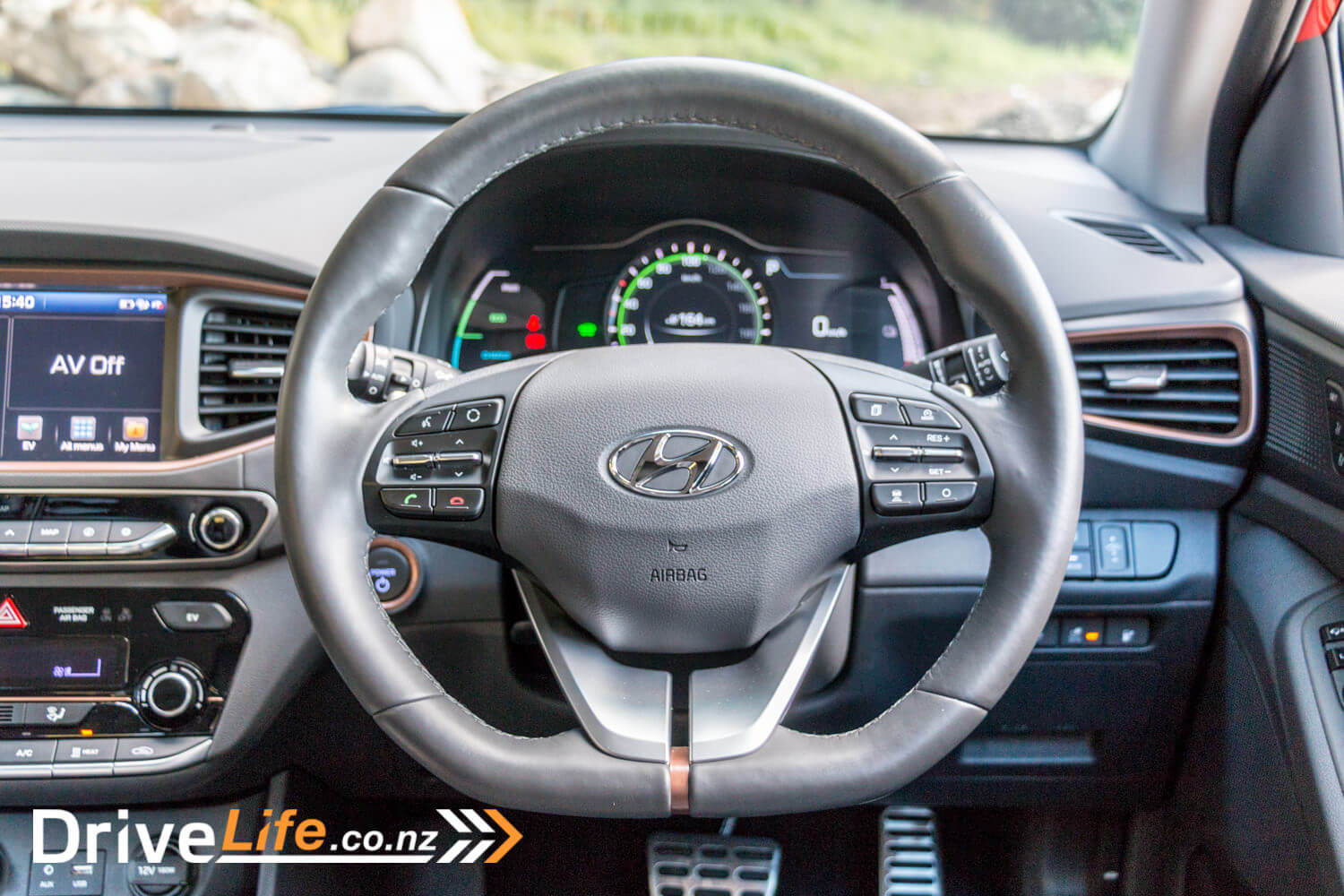
The pros and cons
| Pros | Cons |
|
|
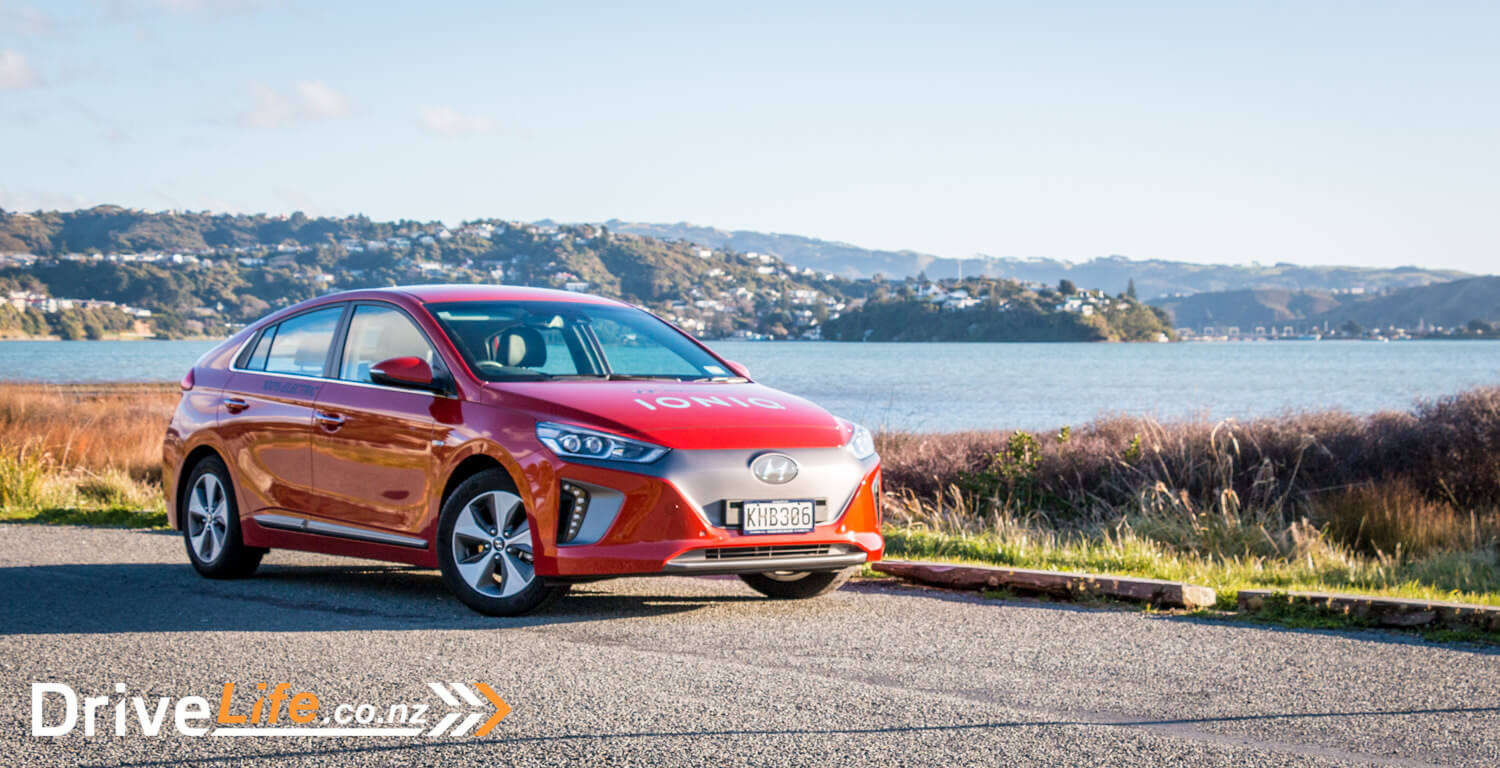
What we think
As I said above, electric cars are the future, and I think the Ioniq EV is a great start. It’s very much a normal car, which happens to be electric. There are no downsides in normal use over, say, an Elantra. The batteries don’t eat into cabin or storage space. It’s fast enough, it handles really well, and there are lots of safety and convenience features. There’s the limited range of course but for day-to-day use, how often do you do more than 240km in a single day? Almost never for me.
At $66k it’s not cheap, but at the moment there are quite a few places to charge for free. And even at home electricity rates it’s the equivalent of around 30c per litre compared to petrol. If you have solar already then you can partly charge it for free at home.
Rating – Chevron rating 4.5 out of 5

| Vehicle Type | Electric mid-sized sedan |
| Starting Price | $59,900 + on-road costs |
| Tested Price | $65,900 + on-road costs |
| Engine | Permanent Magnet Synchronous Motor |
| Transmission | Direct Drive System |
| 0 – 100 kph | 8.1s |
| Kerb Weight | 1420 kg |
| Length x Width x Height | 4470 x 1820 x 1460 mm |
| Cargo Capacity | 350 Litres |
| Battery Capacity | 28kWh |
| Fuel Efficiency | Advertised Spec – Combined – 11.5kWh/100km
Real World Test – Combined – 13.5kWh/100km |
| ANCAP Safety Ratings | 5 stars |
| Warranty | 3 year, 100,000km mechanical warranty and roadside assistance
10 year unlimited kilometre battery warranty 10 year/200,000km anti-perforation corrosion body warranty |
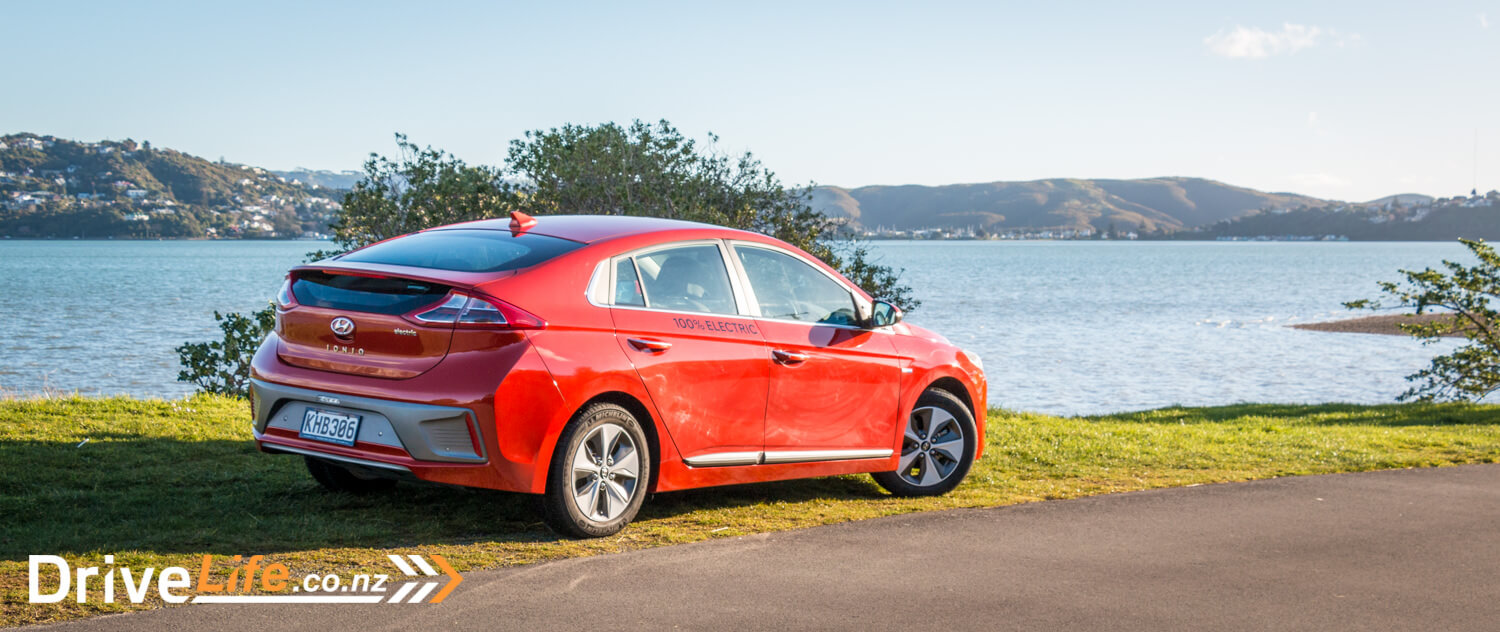


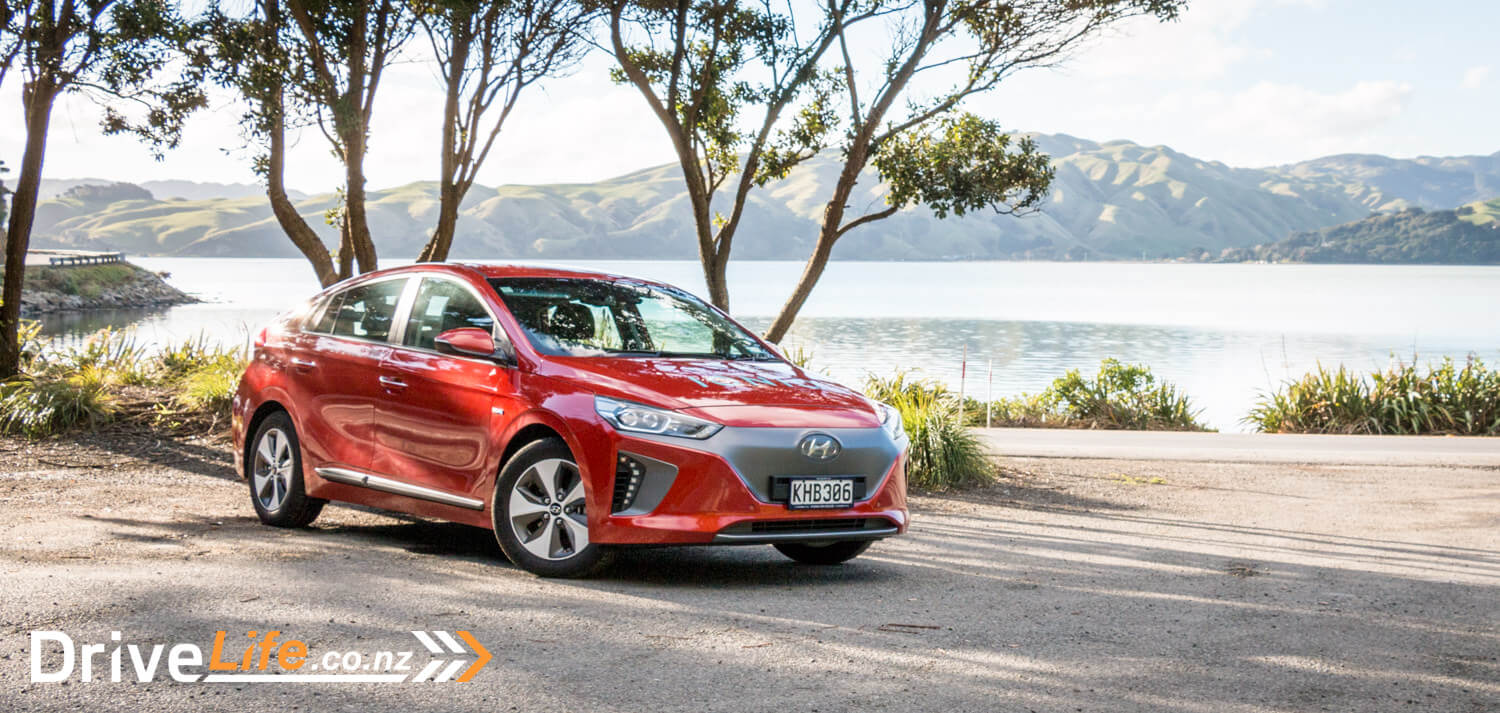











































Nice review, thanks !
But you should double-check your data for the comparative table: Renault Zoe has ~ 300 km real range (400 km NEDC), and costs significantly less than its competitors: between 23 000 and 27 000 € (28 000 to 33000 $)
Thank you for this review. I live off-grid and on a lifestyle block. While
not quite the off-road experience, my driveway is a metal,1km steep and windy. I currently own & still drive a 2004 Prius. The Prius is a bit wimpy on flat wet ground (and flat grass paddocks) and then skids on the metal road on dry days driving uphill.
How do you think the IONIQ would fair in these same conditions?
Hi,
We didn’t test the Ioniq in these sorts of conditions, just on normal roads so I can’t really say. It’s a front wheel drive car with a similar layout to the Prius so it would likely perform in a similar fashion, though a newer model should have better traction and stability control.
Rob